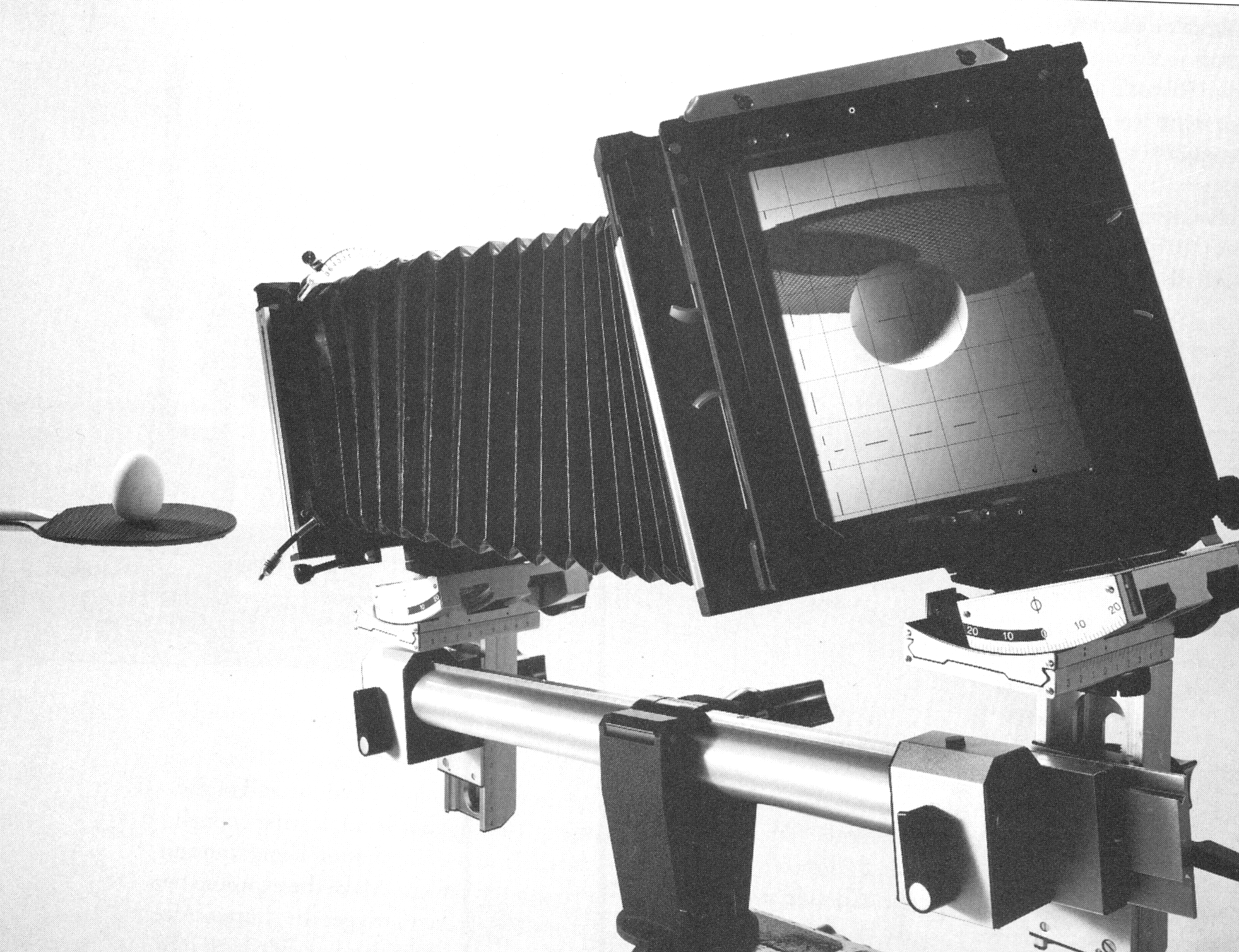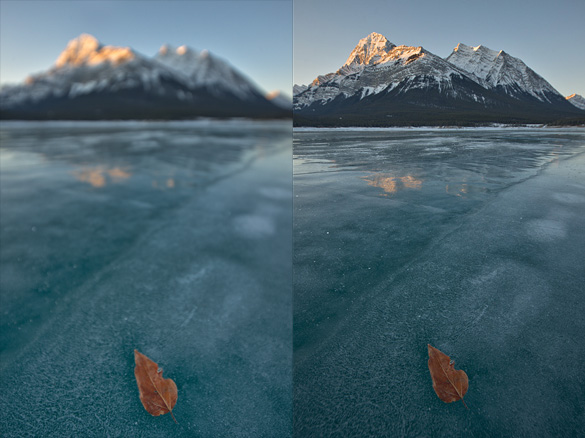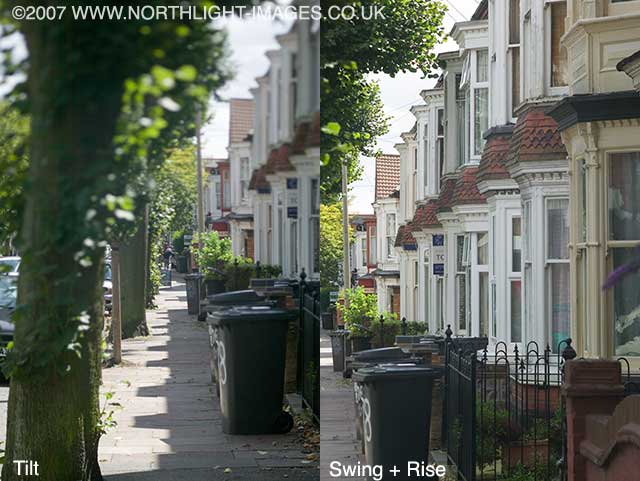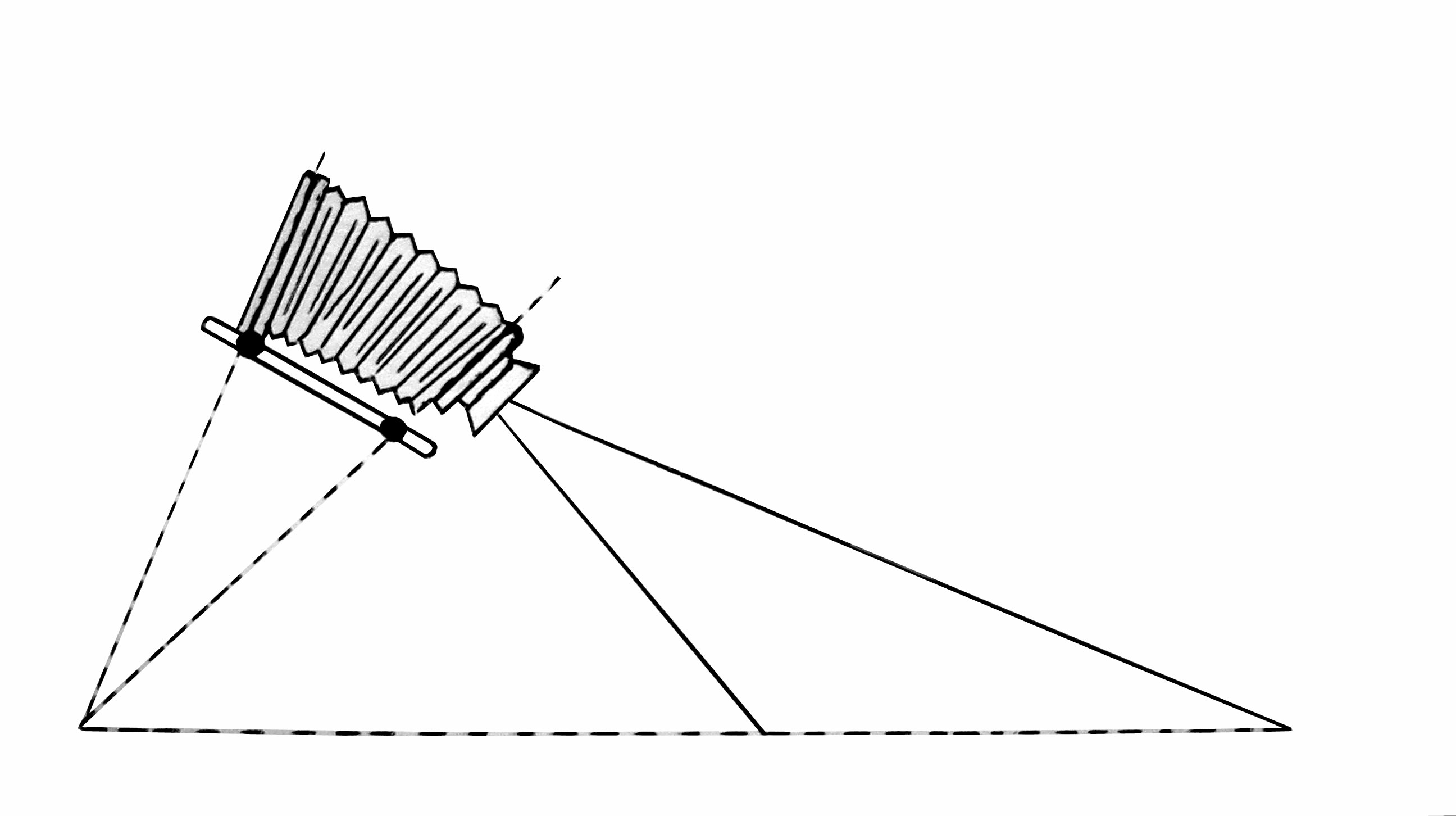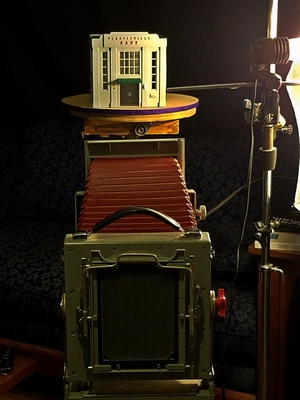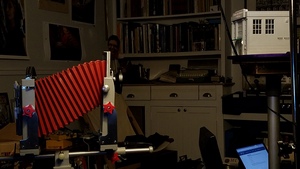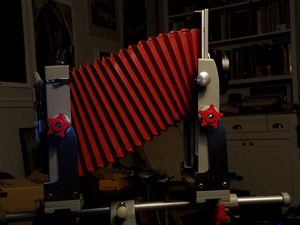1) Find subjects with strong flat horizontal components that you can look down on-
2) Place the camera to frame the subject on a flat plane (table) (landscape)
3) Tilt the camera to compose the subject with no movements, focus on foreground object
4) Use your digital camera to shoot your subject from the same camera position, zoom to match the same framing.
5) check the digital image to see if the lighting, exposure and subject matter looks the way you want.
6) Meter the subject, use the Quick Disc to determine if you need to compensate for bellows extension.
7) Use the front standard in a tilt to sharpen the plane of focus - (you might have to use rise-fall to recompose) Expose the Film
8) Repeat this with a vertical subject that extends away from the camera (like a wall)
Use the Front Standard SWING for a similar effect as the tilt.
8) Develop, Proof, Print- develop your film , make proof sheet, make one fine print for display on the hallway wall.
